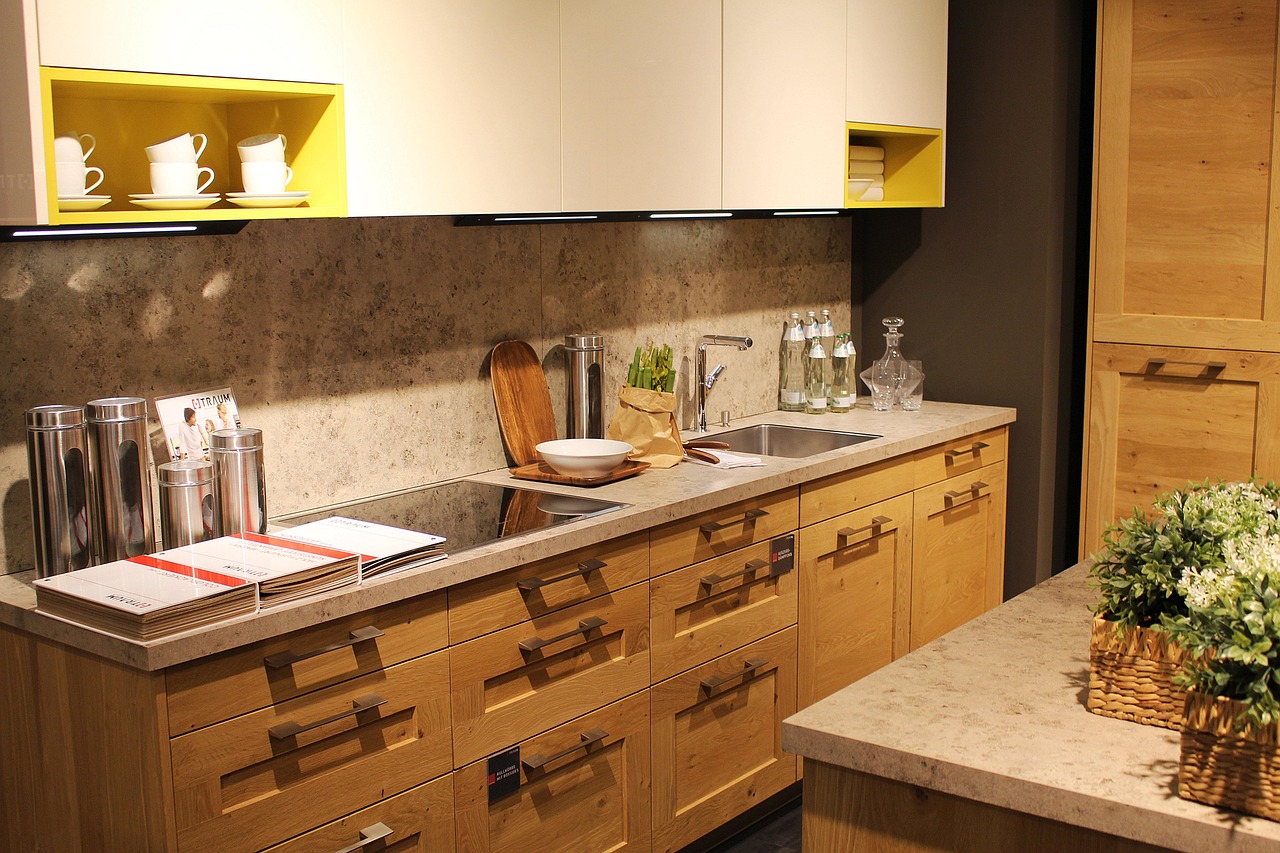Modern kitchen design increasingly embraces natural materials that bring warmth, authenticity, and sustainable beauty to contemporary homes. Among these materials, wood stands out as a versatile surface option that combines practical functionality with timeless aesthetic appeal, creating spaces that feel both sophisticated and inviting.
The Growing Trend Toward Natural Kitchen Materials
Today’s homeowners seek alternatives to cold, synthetic surfaces that dominated kitchen design for decades. This shift reflects broader lifestyle changes emphasizing wellness, sustainability, and connection to nature. Wood surfaces offer tangible benefits that extend beyond mere appearance, contributing to healthier living environments and more sustainable home design practices.
Understanding Wood’s Unique Properties
Thermal Comfort Wood naturally maintains comfortable surface temperatures, making it pleasant to touch throughout all seasons. Unlike stone or metal surfaces that feel cold in winter months, wood provides consistent warmth that enhances the kitchen’s welcoming atmosphere.
Acoustic Benefits Natural wood absorbs sound rather than reflecting it, creating quieter kitchen environments. This characteristic proves particularly valuable in open-plan homes where kitchen noise can disrupt adjacent living spaces.
Tactile Experience The smooth, organic texture of properly finished wood creates pleasant sensory experiences during food preparation and daily kitchen activities. This tactile quality contributes to the overall comfort and satisfaction of using wooden surfaces.
Selecting the Right Wood Species
Hardwood vs. Softwood Considerations
Durability Factors Hardwood species like oak, maple, and cherry offer superior resistance to dents, scratches, and daily wear compared to softwood alternatives. The density of hardwoods makes them ideal for high-traffic kitchen applications where surfaces endure constant use.
Grain Pattern Variations Different species exhibit distinct grain characteristics that influence overall kitchen aesthetics. Bold, pronounced grains create dramatic focal points, while subtle patterns provide neutral backgrounds that complement other design elements.
Color Stability Some wood species maintain consistent coloring over time, while others develop rich patina through exposure to light and air. Understanding these characteristics helps homeowners make informed decisions based on desired long-term appearance.
Premium Wood Options
Solid Wood Woktops crafted from premium species like American black walnut or European oak provide exceptional beauty and performance. These high-quality materials justify their investment through superior durability, repairability, and timeless appeal that enhances property values.
Exotic Species Considerations Tropical hardwoods offer unique colors and grain patterns but require careful sourcing to ensure environmental responsibility. Certified sustainable options provide exotic beauty while supporting responsible forestry practices.
Installation and Customization Options
Professional Installation Benefits
Precision Fitting Expert installers ensure proper measurements, seamless joints, and appropriate expansion gaps that accommodate wood’s natural movement. Professional installation prevents common issues like warping, splitting, or poor edge alignment.
Custom Edge Profiles Skilled craftsmen can create various edge treatments from simple rounded profiles to elaborate decorative moldings. These details significantly impact the finished appearance and reflect personal style preferences.
Integration with Kitchen Elements
Sink and Appliance Cutouts Proper integration of sinks, cooktops, and other appliances requires precise cutting and sealing to prevent moisture damage. Professional installation ensures these critical junctions remain watertight and structurally sound.
Backsplash Coordination Wood surfaces pair beautifully with various backsplash materials including natural stone, ceramic tiles, and stainless steel. Thoughtful coordination creates cohesive design schemes that highlight wood’s natural beauty.
Maintenance Strategies for Longevity
Preventive Care Approaches
Daily Protection Habits Simple practices like using cutting boards, wiping spills immediately, and avoiding excessive heat exposure preserve wood surfaces effectively. These habits become second nature and significantly extend surface lifespan.
Seasonal Maintenance Routines Regular oiling schedules, typically monthly during initial years, maintain wood’s protective barrier and natural luster. Seasonal deep cleaning removes accumulated residues while refreshing the surface appearance.
Professional Restoration Services
Refinishing Capabilities When surfaces show significant wear or damage, professional sanding and refinishing can restore original beauty. This renewable characteristic provides excellent long-term value compared to replacement-only alternatives.
Frequently Asked Questions
What makes wooden kitchen surfaces different from other natural materials? Wood offers unique warmth, repairability, and sustainability advantages over stone alternatives. Its renewable nature and ability to be refinished provide long-term value while supporting environmental responsibility.
How do wooden surfaces perform in busy family kitchens? With proper care, wooden surfaces handle daily family activities excellently. Their natural antimicrobial properties and ability to be restored make them practical choices for active households.
What initial investment should I expect for quality wooden worktops? Mid-range wooden surfaces typically cost 20-40% less than premium stone while offering comparable longevity. The investment often proves economical when considering restoration capabilities and timeless appeal.
Can wooden kitchen surfaces complement modern design styles? Absolutely. Clean-lined wood surfaces work beautifully in contemporary kitchens, providing organic contrast to sleek cabinetry and modern appliances while maintaining sophisticated aesthetics.
What environmental benefits do wooden worktops provide? Responsibly sourced wood sequesters carbon, supports sustainable forestry, and requires less energy to produce than synthetic alternatives. End-of-life disposal is also more environmentally friendly.
Conclusion
Wooden kitchen surfaces represent thoughtful investments in both home value and sustainable living. By understanding proper selection, installation, and maintenance practices, homeowners can enjoy decades of natural beauty and functional performance. The combination of environmental responsibility, aesthetic appeal, and practical benefits makes wood an increasingly attractive choice for discerning homeowners seeking authentic, sustainable kitchen design solutions.

